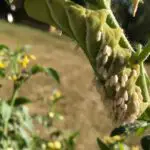Growing tomatoes all year round sounds like a pipe dream – but learning how to overwinter tomato plants without a greenhouse is actually much easier than it seems on the surface. You’ll need to prep your plants and either overwinter them in pots indoors, keep them bare root dormant through the winter, or maintain them as stem trimmings but it can be done!
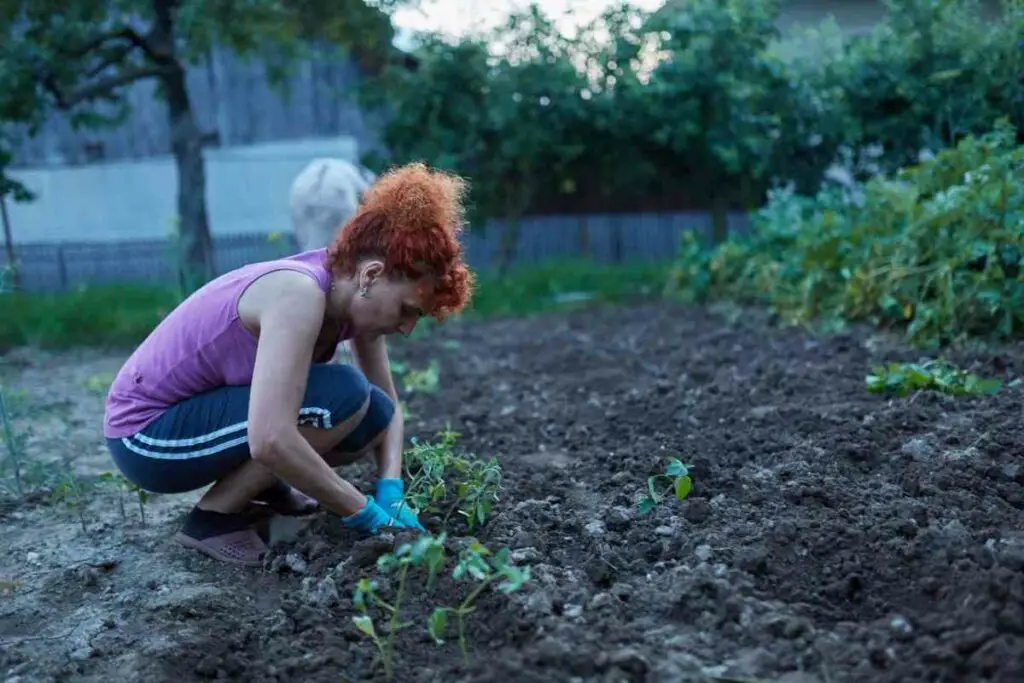
In the rest of this detailed guide we shine a light on everything you need to know about overwintering your tomato plants without having to spend a mountain of money on a greenhouse.
Let’s get into it, shall we?
Can Tomato Plants Be Overwintered in the First Place?
While tomatoes are very much a warm season crop and can be damaged (or outright killed) by cold weather, overwintering these plants is not only possible but also significantly simpler than most folks realize.
Sure, you need to be smart and strategic about overwintering your tomato plants.

But as long as you follow the inside information highlighted below you’ll be able to keep your plants happy and healthy through the winter – and ready to jumpstart your tomato season next spring!
How to Overwinter Tomato Plants Without a Greenhouse?
Overwintering your tomato plants shouldn’t be done on a whim.
It’s not something you should “wing” and try to tackle randomly, either.
Make even just a couple of simple mistakes when prepping your plants for overwintering and you might wipe your tomatoes out completely, just as though you left them outside to wither and die when the frost rolled in.
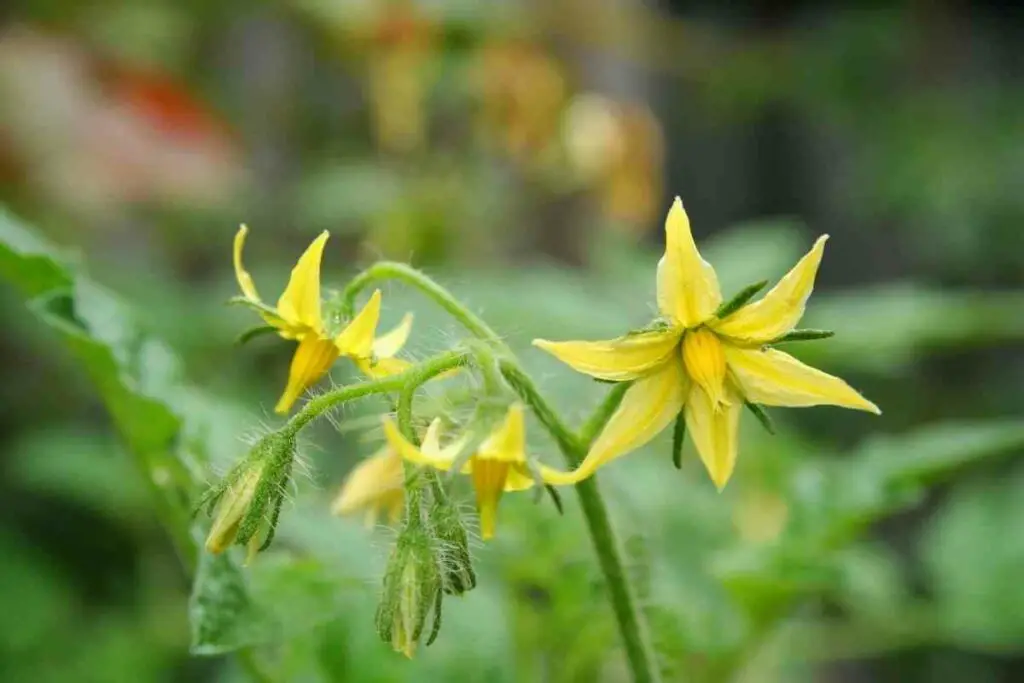
Pay attention to the tips below.
Plan out how you’re going to overwinter your tomatoes at least a couple of weeks in advance.
And make sure that you get your tomatoes out of the ground before the first frost roles in.
Your odds of success depend on it!
Prep Your Plants
Overwintering your tomatoes begins about a month to a month and a half before your first frost is expected to hit your garden.
Start by almost overwatering your tomato plants, making sure that they are as hydrated as possible.
The overwintering process is going to shock them quite a bit. The more hydration they have the better their odds of survival.
Secondly, you want to prune away any dried, dying, or diseased leaves from your tomato plants.
Take Your Time – Inspecting every single stalk, and cut away anything that seems even just a little bit suspect. Again, your tomato plants are going to be shocked during the overwintering process and need to focus their resources on parts of the plant that are healthy.
Third, do a “pest inspection”.
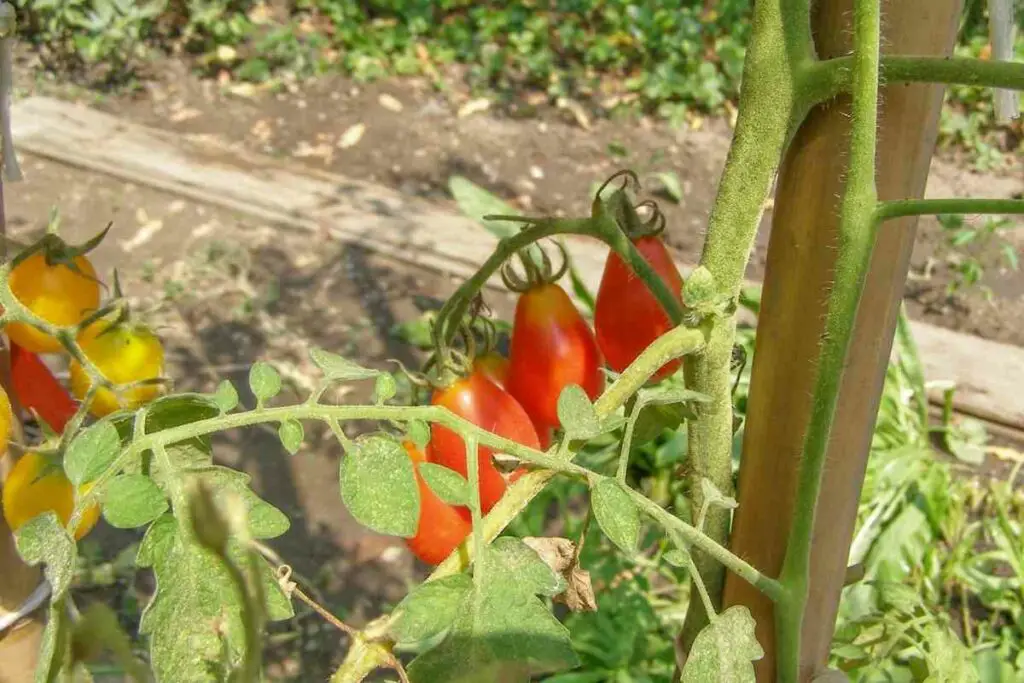
Banish white flies, caterpillars, aphids, hornworms, and any other insects that are going to want to turn your overwintering tomato plants into a cold-weather lunch.
Go through this routine for 4-6 weeks before you’re getting ready to overwinter and you’ll boost your odds of success dramatically.
Overwinter in Your Home
Overwintering tomato plants in your home is probably the easiest way to maintain live plants during the cold winter months.
The idea here is to basically transplant your tomato plants and the root system from the garden into pots, basically keeping them as houseplants until late spring.
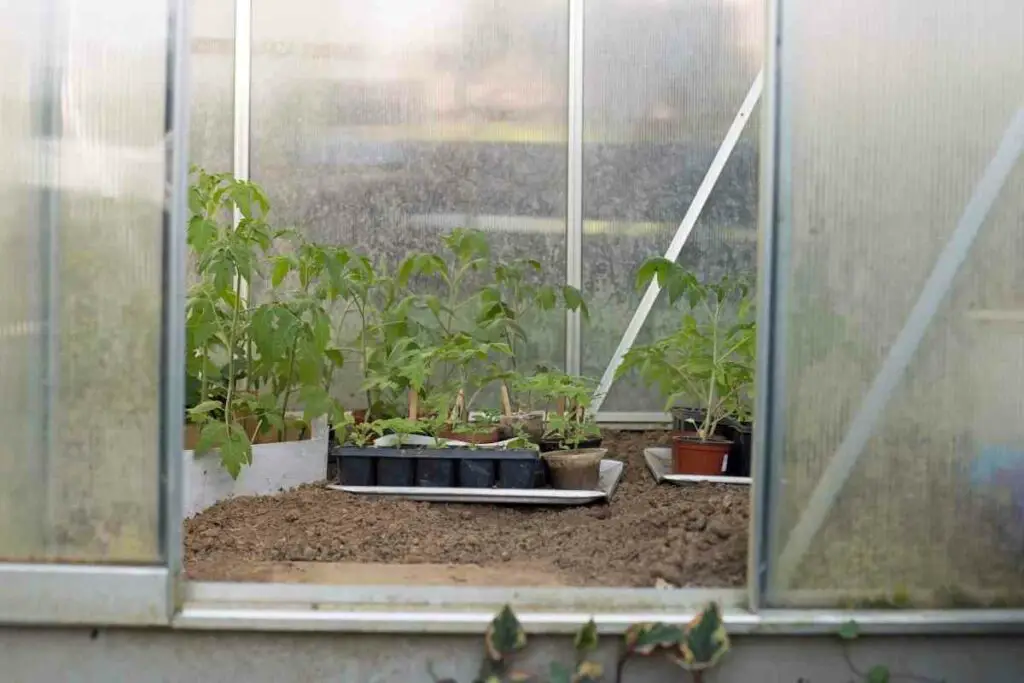
This approach works best on smaller tomato plants in smaller tomato varieties, but even larger tomato plants can be overwintered this way with some strategic pruning.
You’ll want to start with quality potting soil in your pots, sterile soil that is warm, moist, and ready to receive as much of the tomato plant root mass as you’ve been able to save from the garden.
Water Regularly – Keep those potted plants in front of a window (getting at least 12 hours of sunlight), and consider investing in LED grow lights if you want to really boost the health and vitality of your tomatoes.
A shelf LED light system won’t cost you much, won’t take up much space, and can provide anywhere between 18 and 20 hours of “sunlight” for your tomatoes that they never would have gotten sitting in a windowsill alone.
Stay vigilant and always on the lookout for pests and disease, though.
These problems need to be dealt with immediately when you’re dealing with indoor overwintered tomato plants.
Overwinter as Stem Trimmings
If keeping potted tomato plants seems a little intensive for you, you can overwinter your tomatoes as stem trimmings instead.
A lot of people love this approach because it doesn’t take up a lot of space and pretty much anyone can pull it off successfully with:
- a decent pair of plant shears
- a jar or plastic container
- and some robust tomato plants to start
The idea here is to cut 3 to 5 inch long pieces of your main tomato plant stems from your tomatoes at least a week or two before the first frost.
You want to get as much of the terminal portion of your tomato stems as you can.
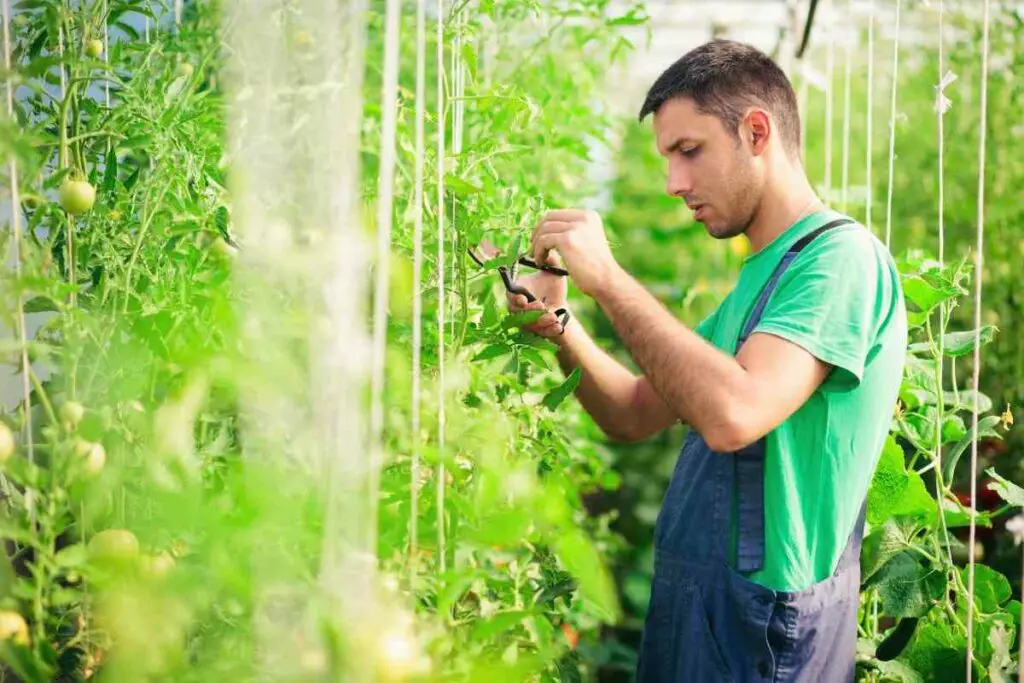
Prune away all of the leaves except for the very most top two or three, and then stuff the cut end of the tomato stem into a container of water.
Wrap a piece of masking tape around the stem somewhere (leaving a little flag) so that you can write the variety of that tomato to keep things easy when you replant in the spring.
Make sure that your trimmings are kept in a bright area (right in front of a windowsill, ideally south facing) and maintain water levels. The warmer you can keep your tomato stem the happier it will be, too.
Within a few weeks you’ll notice little root systems starting to establish themselves. As soon as that happens you want to rinse the roots under running water and then flush out and refill your stem container with new water.
Heads Up! – Every six weeks or so you’ll want to trim off the top 3 to 5 inches of the tomato cutting. Rinse and repeat the process until you have two cuttings, then a third cutting later in the winter, and probably one more before winter is over.
All that’s left to do is get these rooted cuttings into fresh potting soil (planted as deeply as your part will allow) about a month to six weeks ahead of the last frost date.

Acclimate your new tomato plants as spring goes on and by early summer these will be ready for transplantation into the garden!
This is a great way to keep your tomato strains rocking and rolling, especially strains that you’ve carefully developed from seed and cross-pollination over the years.
Conclusion
You should keep in mind that learning how to overwinter tomato plants without a greenhouse is actually much easier than it seems on the surface:
- Prep your plants
- Overwinter them in pots indoors
- Keep them bare-root dormant through the winter
- Or you could maintain them as stem trimmings
Read our steps above on how to properly winterize you tomato plants.
- How to Dry Basil Leaves: A Professional Guide
- Is an Avocado a Fruit or Vegetable? Simple Answer and Explanation
- Does Pineapple Have Seeds? Exploring the Anatomy of Pineapples
- Blooming Through Winter: Can I Grow Vegetables Indoors in the Winter?
- What Can You Grow in a Greenhouse All Year Round: A Guide to Year-Round Greenhouse Gardening
- Are Blueberries Blue? Debunking the Myth of Their Color













